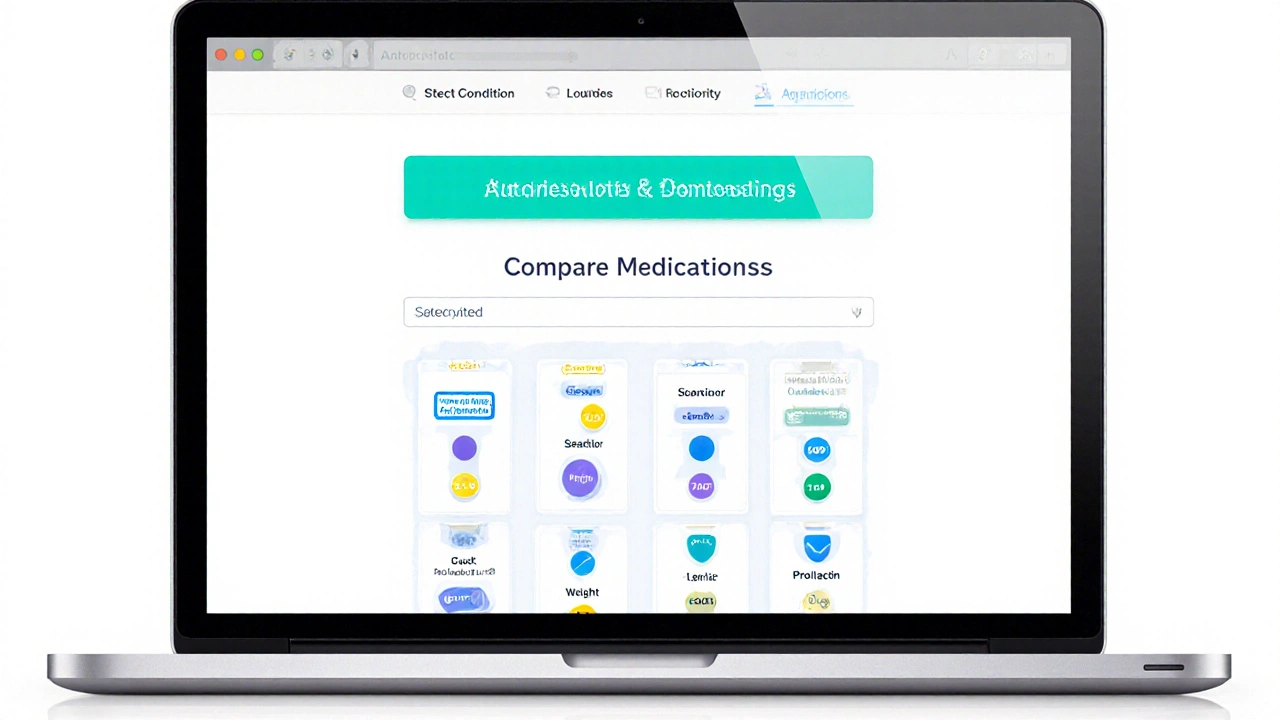
Seroquel (Quetiapine) vs Other Antipsychotics: A Practical Comparison
A detailed comparison of Seroquel (quetiapine) with major antipsychotic alternatives, covering efficacy, side effects, cost and tips for choosing the right medication.
When looking at Best Antipsychotic for Bipolar, the medication that offers the most balanced control of mania, depression, and tolerability for bipolar patients. Also known as optimal bipolar antipsychotic, it shapes how clinicians match drugs to a person’s unique symptom pattern.
Understanding the illness itself matters. Bipolar Disorder, a mood condition marked by alternating highs (mania) and lows (depression) drives the need for drugs that can calm extreme energy while preserving daily function.
Most of the choices belong to the class of Antipsychotic Medication, drugs originally designed for schizophrenia but also effective at stabilising mood swings in bipolar patients. These medicines work by tweaking dopamine and serotonin pathways, which helps dampen manic spikes and can also lift depressive mood.
In many treatment plans, an antipsychotic is paired with a Mood Stabilizer, a drug such as lithium or valproate that prevents rapid mood shifts over the long term. The combination often yields better relapse protection than either drug alone.
Choosing the best antipsychotic for bipolar involves three core criteria: how well it curbs manic episodes, its impact on depressive symptoms, and the side‑effect burden. A drug that knocks out mania but leaves patients exhausted or weight‑gaining may not be the right fit.
Side‑effects are not just a footnote; they shape adherence. Metabolic issues like weight gain, high blood sugar, or cholesterol spikes are common with several atypical agents. Others may cause sedation, tremor, or movement disorders. Regular labs and symptom check‑ins help catch problems early.
Among atypical antipsychotics, quetiapine, lurasidone, and olanzapine‑fluoxetine combo often rank high for bipolar use. Quetiapine shines for acute mania and depression but can be sleepy. Lurasidone offers strong antidepressant effects with less weight gain. The olanzapine‑fluoxetine mix targets rapid‑cycling cases but brings a higher metabolic risk.
Special populations need extra care. Pregnant patients may prefer agents with more safety data, like haloperidol, while elderly users should avoid high‑sedation drugs that increase fall risk. Adolescents often start with lower doses and close monitoring for growth effects.
Guidelines from the American Psychiatric Association and NICE suggest starting with an atypical antipsychotic for acute episodes, then reassessing after 4–6 weeks. If response is good, clinicians may taper the dose or add a mood stabilizer for maintenance.
Practical factors such as pill burden, insurance coverage, and brand versus generic availability also steer decisions. A once‑daily tablet may improve adherence compared to multiple daily doses, and a generic version can reduce out‑of‑pocket costs.
Putting it all together, a decision tree often looks like: assess episode type, evaluate side‑effect profile, consider comorbidities, check cost, then choose the antipsychotic that offers the best balance. Monitoring labs, weight, sleep, and mood changes keeps the treatment on track.
Below you’ll find a curated set of articles that dive deeper into each drug option, compare efficacy data, and share real‑world tips for managing side‑effects. Use these resources to fine‑tune your treatment plan and stay ahead of bipolar challenges.

A detailed comparison of Seroquel (quetiapine) with major antipsychotic alternatives, covering efficacy, side effects, cost and tips for choosing the right medication.